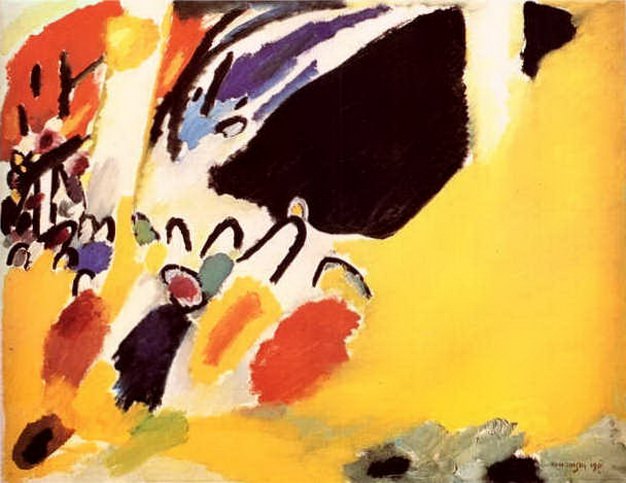Impression III (Concert) Vasily Kandinsky (1866-1944)
Vasily Kandinsky – Impression III (Concert)
Edit attribution
Download full size: 626×483 px (0,1 Mb)
Painter: Vasily Kandinsky
Painted in 1911, in oil on canvas, size 77.5 by 100 cm. It is in the Lenbachhaus, Munich, Germany. Vasily Vasilievich was not only an outstanding artist but also a theorist. He believed that art should throw off the shackles imposed by the physical form of objects and phenomena and convey the deepest essence of ideas to the viewer. According to his classification, paintings are divided into compositions, improvisations, and improvisations.
Description of Wassily Kandinsky’s painting "Impression III (Concert)"
Painted in 1911, in oil on canvas, size 77.5 by 100 cm. It is in the Lenbachhaus, Munich, Germany.
Vasily Vasilievich was not only an outstanding artist but also a theorist. He believed that art should throw off the shackles imposed by the physical form of objects and phenomena and convey the deepest essence of ideas to the viewer. According to his classification, paintings are divided into compositions, improvisations, and improvisations. The latter refers to this work and means the depiction of the author’s inner feelings about certain things or events. This canvas reflects the emotions experienced from a magnificent concert by the Austrian-American composer Arnold Schoenberg, with whom he later became friends on the basis of a shared understanding of the basics of musical and pictorial imagery.
The average person, when viewing such expressionist abstractions, should turn off the rational and feel with the soul, with a special vision, trying to comprehend all the nuances not with the mind. However, with regard to this master’s work, one can understand quite a lot about what is written by looking closely. Because the big black something in its shape is very reminiscent of the piano. Clinging to this association, it is logical to assume that in the lower left corner the audience is depicted, and in the upper corner, respectively, the rest of the orchestra, standing out with charcoal lines similar to bows. Also visible to the naked eye is the energy of movement - strokes, large and small spots, pointing diagonally to the right corner.
Color is also particularly important. Yellow is very cheeky and dynamic, it disturbs, strongly affects the beholder, blue, darkening, causes a growing longing, red gives power and aggressive force, black symbolizes the faded abyss and something absolutely gutless.
Кому понравилось
Пожалуйста, подождите
На эту операцию может потребоваться несколько секунд.
Информация появится в новом окне,
если открытие новых окон не запрещено в настройках вашего браузера.
You need to login
Для работы с коллекциями – пожалуйста, войдите в аккаунт (open in new window).




















You cannot comment Why?
Perhaps it’s an abstract painting with black, white, yellow, red, blue, and orange colors on a yellow background with a black, white, black, red, orange, yellow, and black, and white, and blue design.